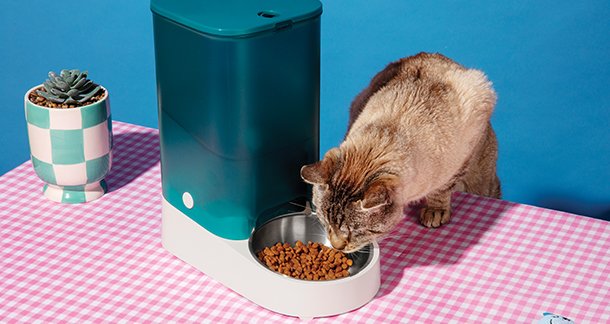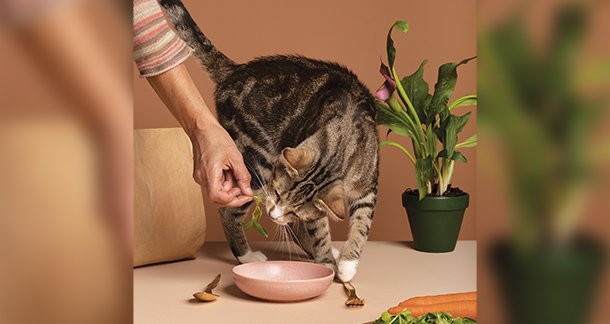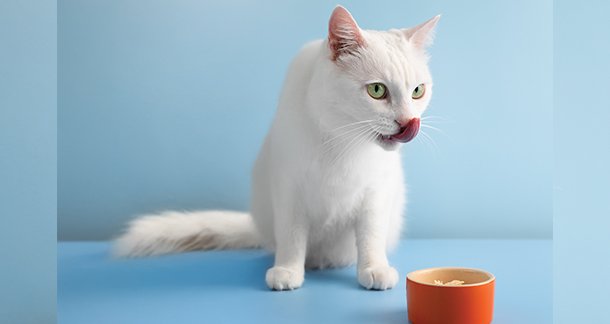Cats confined indoors depend on their owners on when, what, and how they eat, which impacts a cat’s welfare on multiple levels. Obesity and behaviour problems are common in pet cats, and these conditions, although multifactorial, may be related to how cats are fed. The feeding of cats should follow these fundamental principles:
- how cats are fed should reflect the way that cats naturally eat
- feeding should promote the physical and mental/behavioural health of the cat
- Domesticated or pet cats should be given choices to assess their preferences whenever possible.
How cats eat :
Feral cats are generalist predators, likely able to survive in many environments because they adapt to variable prey. In nature, cats determine their eating schedules based on the availability of resources. Unowned island cats, not provided by humans, primarily hunted and ate small rodents and birds. However, fish, invertebrates, and reptiles/amphibians were also consumed.
Human provision does not eliminate predatory behaviour. One study in a national park found that the native rodent and bird populations were significantly lower in areas where cat colonies were fed compared to areas where cats were not observed. Another study found that feral cats hunted and consumed approximately four times the amount of prey as housecats. The percent of feeding from prey for housecats varied from 15–90% of their daily intake. The feline diet changes with season and prey availability, and some cats specialize in a particular type of prey while others are generalists. It is unknown whether a cat’s preference for varied prey predicts their preference for a varied diet in terms of meat source, textures, or tastes.

Previous studies have found that more than 40% of cat owners report feeding their cats dry food exclusively, with around 30% feeding a diet of at least half canned food. Many cats (40–60%) are free-fed or fed twice daily, with free-feeding more common for obese cats.
The caloric intake of the average neutered adult cat varies widely. Still, it has been estimated at approximately 55 kcal/kg per day. Because the most common natural prey of both domestic cats and their closest ancestors is mice (30 kcal/mouse), this lineage of cats likely evolved to eat several small meals per day. When allowed to choose their feeding patterns, cats tend to eat between roughly 8 and 16 meals a day. It is unknown how feeding relatively infrequent meals impacts the health or behaviour of cats, although one study of twenty laboratory-housed male cats found increased aggression and less consumption of food and water when meal-fed compared to when fed ad libitum (unrestricted access to food – time and quantity)
Foraging and contra-freeloading
Because all animals must forage for food, whether by hunting, scavenging, or searching, enrichment encouraging foraging can provide an outlet for natural behaviours. Many captive animals prefer working for food over receiving freely available food, a phenomenon known as contra freeloading.
Because one study found that cats preferred to eat freely available food before lever pressing (working) to receive the food, they have been described as “the only species so far tested that showed no contra freeloading.” Due to some methodological issues (small sample size, food restriction, the task required by cats to acquire food), the results of this study should be interpreted with caution, and more studies are needed. Cats naturally work for food; only around a third of cats’ hunting attempts lead to a kill. Cats will continue to kill prey (i.e., contra freeload) before consuming previously killed prey. However, hunger is not necessary for cats to hunt or play; hunger increases hunting and playing.

Feeding practices
Offering small, frequent meals mimic’s cats’ natural feeding preferences. Owners can allow their cats to graze or offer multiple feeding options, such as food puzzles or meals. The owners must constantly monitor their cat’s daily food intake. This can be done by weighing the food with a scale and following the recommendations of a veterinarian. Regularly assessing the cat’s weight, body condition, and muscle tone will help determine the effectiveness of the feeding program for the individual cat.
Owners may need education about the proper cleanliness of feeding areas, which may impact cat feeding behaviour. Many cat owners do not wholly or routinely empty and wash bowls and instead “top off” dry cat food. Saliva and crumbs can quickly accumulate, and a dirty bowl increases bacteria and may be unpleasant to cats; pet food bowls have been ranked among the most bacteria-laded kitchen surfaces. Food bowls and water dishes should be cleaned daily, and food should be replaced as needed. When wet food is left out for long periods, it can become dry, which may reduce its appeal for cats.
Recent attention has focused on a potential cat issue labelled “whisker stress.” Whisker stress is the assumed discomfort experienced when a cat’s whiskers touch the side of a narrow bowl while eating. There is no empirical evidence on whether whisker stress occurs; however, owners may choose to offer food in a few different styles of dishes to see if their cat shows a preference.
Another open question is whether cats prefer water separated from their food, a frequent recommendation based on the assumption that dead prey would contaminate a water source. As with “whisker stress,” no empirical evidence demonstrates a preference for separate food and water areas. Many cats are fed dry food, increasing their water consumption so they may prefer a water source close to their food. Studies are needed, but owners can provide their cats with choices of water and food locations to determine individual preferences.

Author details –
Dr. Vinay Chhabra
Veterinarian and Co-Founder Myfurries.com

